Preparing for fire season: Community-based fire management in Nan Province, Thailand
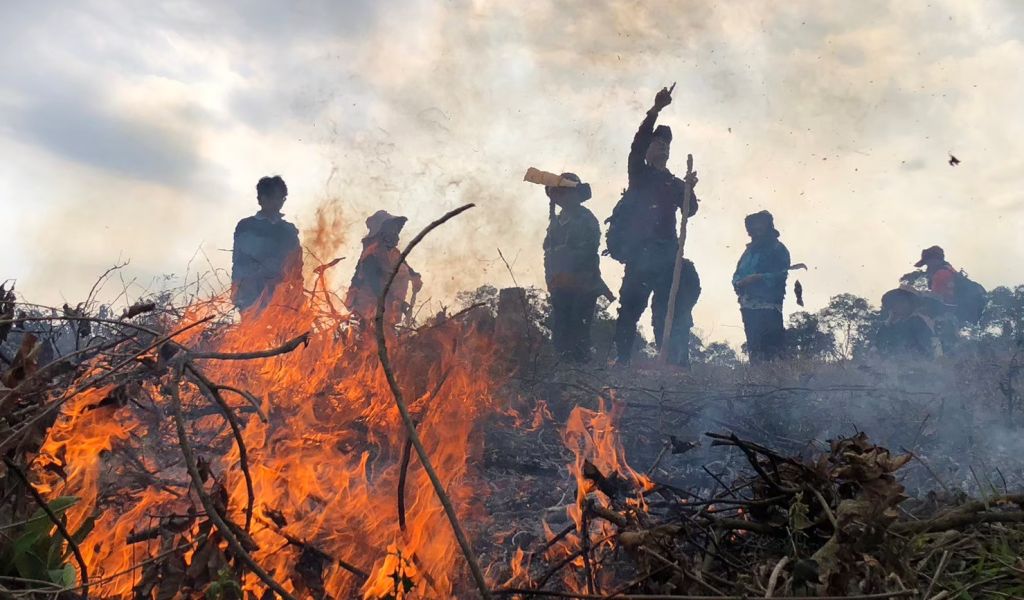
Forest fire season in Southeast Asia starts in January, reaching its peak in April. Smoke from these fires leads to a subsequent increase in particulate matter (PM 2.5) in Thailand’s atmosphere.
Most forest fires in Thailand’s northern region are caused inadvertently. They are often started by accident – when farmers prepare nearby agricultural land and when people gather, forage and hunt for forest products.
By learning how to reduce the risk of forest fires, communities in fire-threatened areas can become active forces in fire management. Efficient solutions involve collaboration with communities for preventive action. They need the necessary resources and capacity development. Relying on reactive methods or fire suppression alone is inadequate.
Since August 2023, RECOFTC’s Community-based Fire Management (CBFiM) project – with support from the US Department of Agriculture Forest Service and partners – has been working with communities and local authorities in Thailand’s northern province of Nan to develop and implement community-based fire management plans. This regional project addresses the root causes of forest fires and responds to growing national and regional concerns about the impact of fires on the environment and public health.
The CBFiM mission
We are working towards building the capacities of communities and governments to manage forest fires and address climate change in Cambodia, Lao PDR, Thailand and Viet Nam. In taking this urgent mission forward, we follow the Food and Agriculture Organization’s integrated fire management framework, which encompasses the 5Rs of forest management – review, risk reduction, readiness, response and recovery.
The ‘preparation phase’ is where we start. Reviewing, reducing risk and ensuring readiness, or the first three Rs, are the first crucial steps towards fire management. Preparation enables communities and stakeholders to understand the contexts and causes of fires and reduce fire risks accordingly. It involves developing appropriate community-based fire management plans and preparing suitable equipment ahead of the fire season.
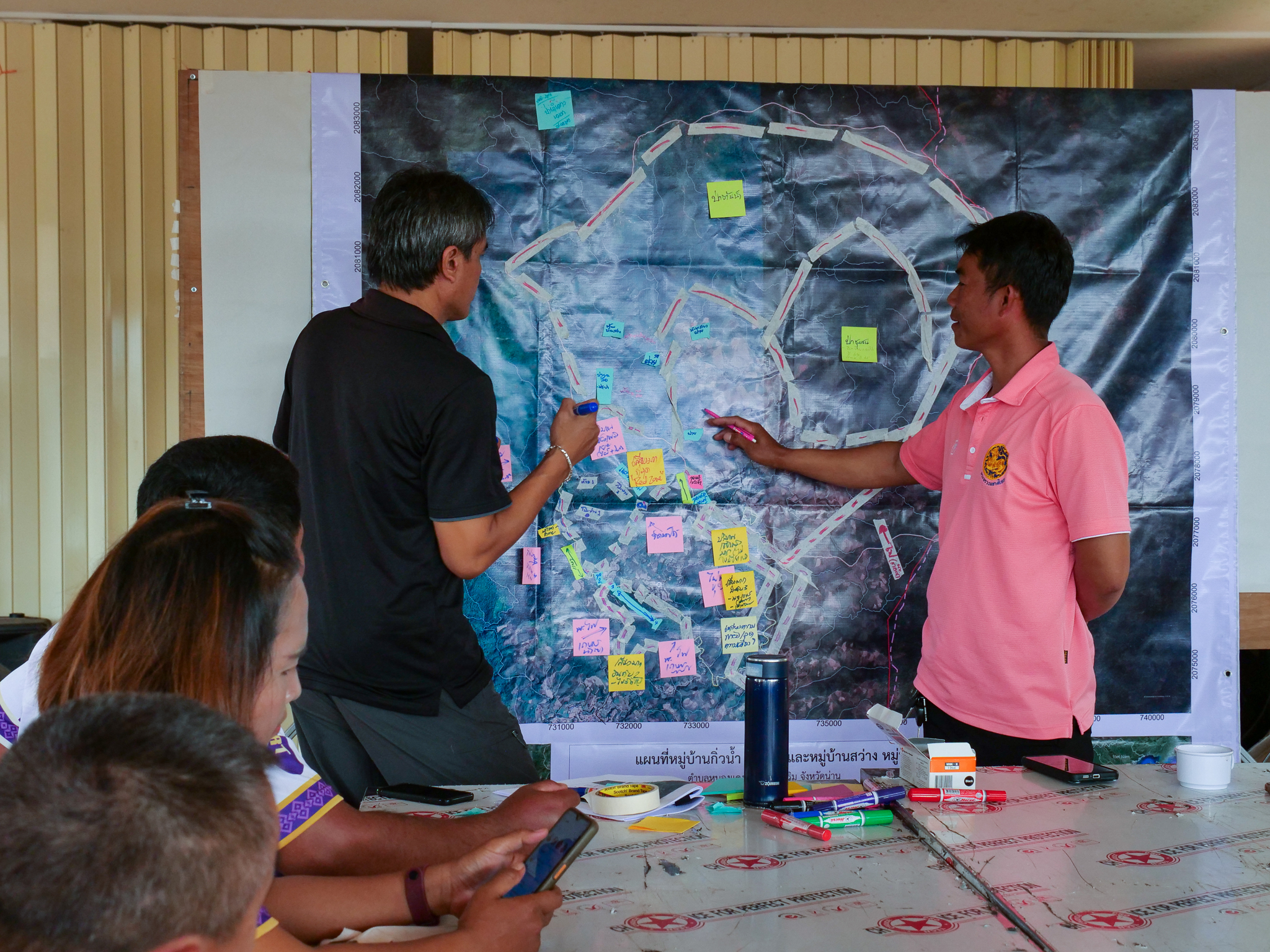
Review: Identifying root causes and potential solutions
From August to September 2023, RECOFTC collaborated with communities in four villages in the fire-prone Doi Phu Kha National Park – Kio Nam, Sawang, Manee Phruek and Rat-rat Pattana. Community members and other stakeholders, including government officials, civil society organization (CSO) partners and academic experts, reviewed the communities’ geographic and socio-economic contexts, analyzing previous fire behaviors and situations, and assessing how the fires burnt and spread. They assessed the communities’ capacity development and asset needs in developing tailored and inclusive community-based fire management plans.
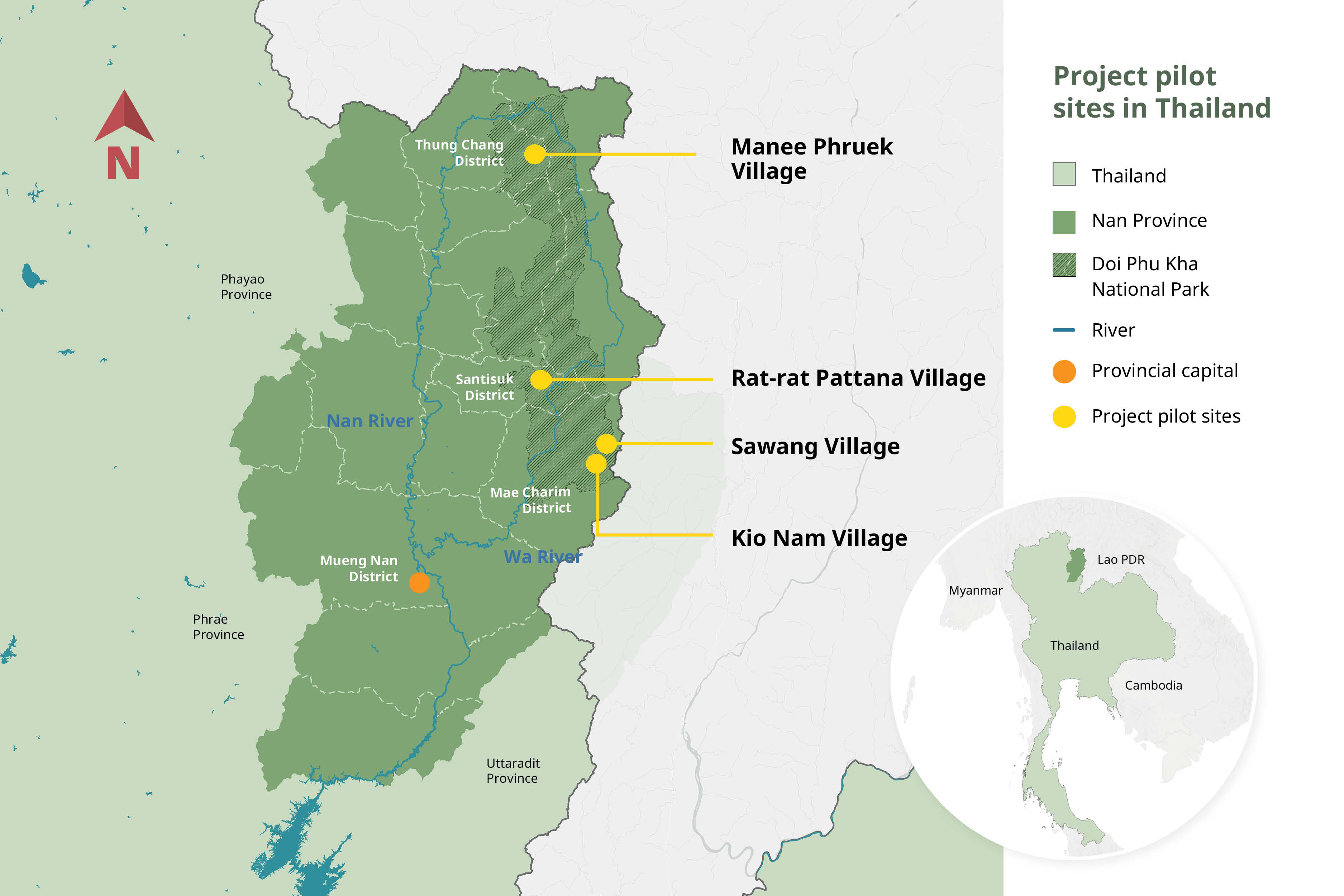
For each village, we conducted situational analyses and capacity development needs assessments. Stakeholder consultation, literature review, focus group discussions and key informant interviews yielded insights into capacity building, informing us of the needed technological and equipment support of communities. These exercises also enabled communities and stakeholders to share structural and policy-related observations for the improvement of fire management at the national level.
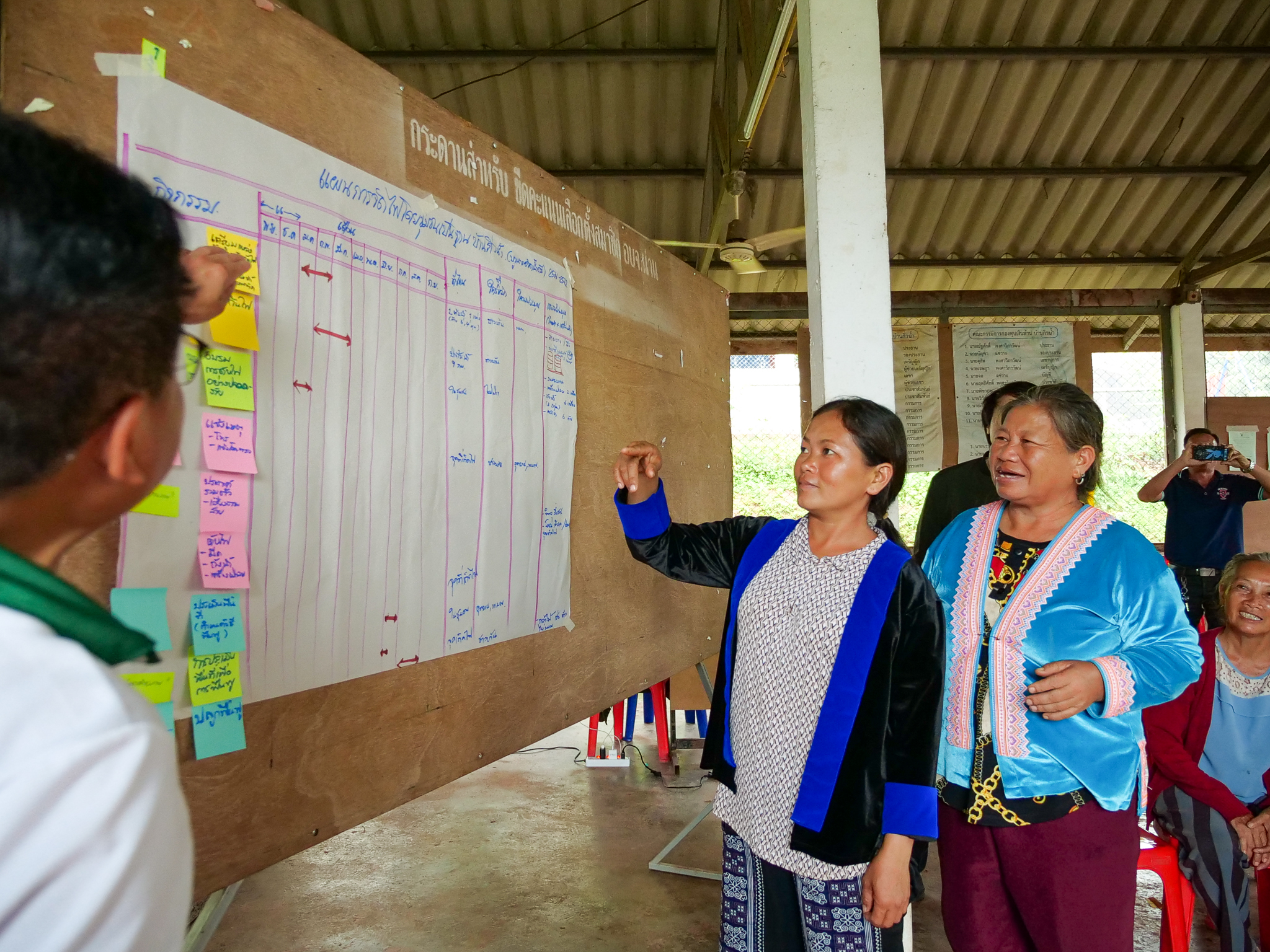
Through fire management planning workshops, we brought community members and multi-sectoral actors together to finetune the fire management plans being developed. In Sawang Village, Samak Yodon, the village head, emphasized the importance of multi-sectoral collaboration and support for communities from government and civil society organizations. He noted that the fire management plan being prepared would guide the community during the fire season, helping effectively reduce fire risks and manage both harmful and beneficial fires. “With guidance from the plan and a sense of ownership and shared responsibilities, we can protect our communities,” he said.
Each target community has developed its own fire management plan. They have discussed these plans collaboratively with nearby communities. These fire management plans will serve as adaptive pilot plans for similar socio-economic and geographic contexts. “Across Thailand, Lao PDR, Cambodia and Viet Nam, approaches to community-based fire management shape themselves based on the country and landscape contexts,” says Marina Tornorsam, CBFiM regional project manager. “While preparation activities adapt to these specific needs, cross learning and exchange remains essential to critically addressing lessons learned, and transboundary fires, smoke and haze.”
Risk reduction: Tackling the causes of fires in high-risk areas
The risk reduction phase is built on findings from the review phase. The strategies are agreed upon by communities and local authorities with support from experts including RECOFTC. Based on findings from the review process, fire-vulnerable areas in the forests and agricultural lands have been mapped. Community members are already implementing fire prevention techniques in high-risk areas this fire season.
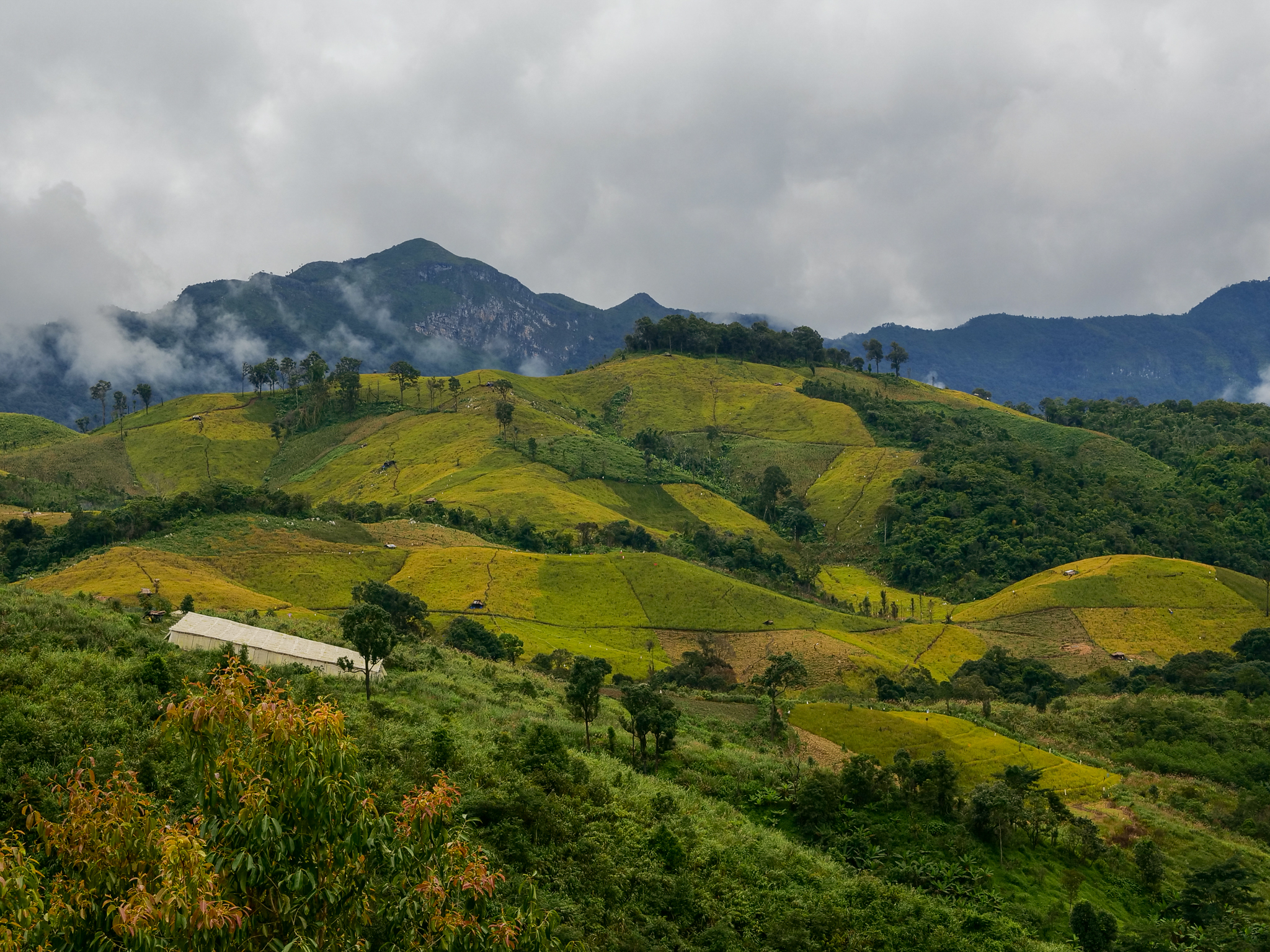
“Effective risk reduction leverages local knowledge and wisdom. We need to equip communities with accessible scientific and academic knowledge and practical, context-appropriate techniques,” says Rawee Thaworn, research and capacity development coordinator at RECOFTC Thailand. “By doing so, we can enhance the effectiveness of local people’s existing practices. Traditional risk reduction methods like prescribed burning and building fire breaks remain critical,” he continues. “We must keep supporting communities to continue implementing these activities in the identified fire-threatened areas.”
Local government, CSOs and the CBFiM project jointly recognize that accumulated fuel such as unmanaged corn stubble and weeds has been a source of forest fires in previous years. We worked with pilot communities to increase their knowledge of fuel management and reduction by removing weeds and other combustible vegetation and materials.
Readiness: Arming local actors with accessible and friendly technology and equipment
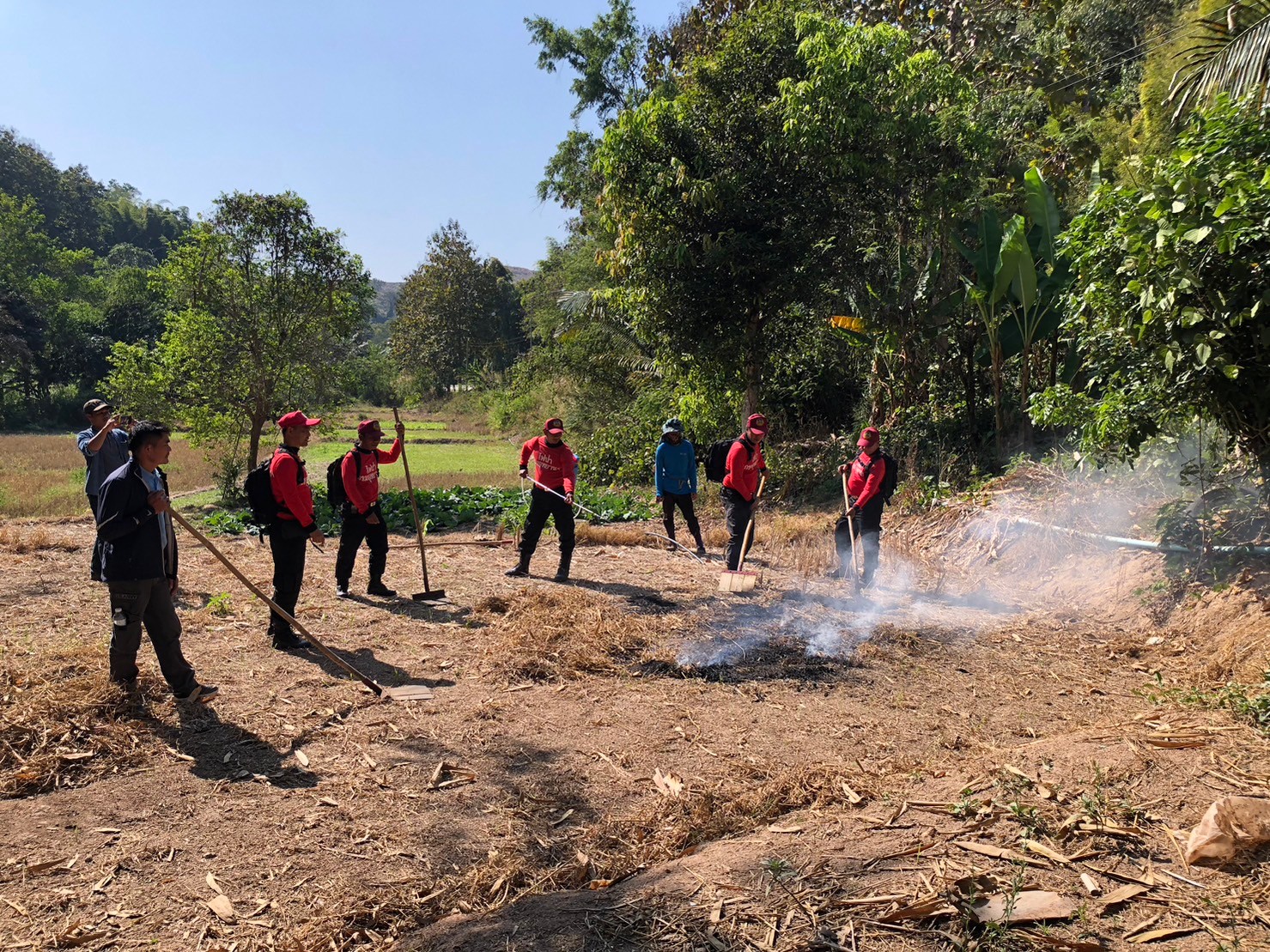
In addition to building capacity, it is crucial that we introduce appropriate fire-fighting tools and technology to cater to community contexts and ensure that these are not too complicated to use and maintain. The CBFiM project coordinated with Doi Phu Kha National Park, Doi Phu Kha Forest Fire Control Station and the Development Project for Security in Nan Watershed under the Royal Initiative to provide appropriate equipment for each community. These included a range of hand tools, communication devices and other supporting equipment for use before, during and after fires. From backpack sprinklers, leaf blowers, fire beaters, rakes and mowers to headlamps, portable radios and first aid kits, these gear reflect the holistic nature of fire management.
Training sessions for safe fire control and suppression have been conducted in all four target communities. The communities and stakeholders are now better equipped to develop and implement actionable fire response plans. It is also necessary to develop early warning systems to notify communities and stakeholders in fire-prone areas when fires occur.
Transforming fire management into a year-round and sustainable process
The preparation phase of the integrated fire management framework serves as the first step to reducing the frequency and intensity of forest fires in Thailand. “By expanding the focus of fire management from just fire suppression during the fire season and burning prohibition to include preparation until post-fire recovery, we can support communities as they tackle fires in forest and agricultural areas,” says Supawat Mata, Head of Doi Phu Kha National Park Fire Control Station.
Zero burning is not feasible as burning is a crucial process to the livelihoods of many forest and agricultural communities. Forest fires will also continue to occur naturally, particularly in the context of a changing climate around the world. We can advocate for responsible, controlled and beneficial use of fires by identifying and allowing specific burning periods that suit the needs and use of communities. We will continue enhancing awareness and educating relevant parties on proper fire use and management.
By ensuring communities and a bottom-up approach are at the heart of all fire management phases, RECOFTC plans to record and share lessons learned from the communities’ response to fires and recovery in the coming months. Beyond 4000 direct beneficiaries in the target areas, we aim to drive positive behavioral changes regarding fire use and management, mainstream community-based fire management plans and practices at the national level, raise general societal awareness and eventually contribute to climate mitigation.
###
Nitchanun Tantapong is communication officer and Ratkawee Boonmake is project coordinator for CBFiM with RECOFTC Thailand.
This story/publication was produced through the Community-based Fire Management (CBFiM) in Asia project, made possible through a five-year cooperative agreement between the USDA Forest Service International Programs and RECOFTC. The project receives financial support from the United States Indo-Pacific Command (USINDOPACOM) of the Department of Defense, along with funding from USAID and the USDA Forest Service International Programs.
For more information, please visit www.recoftc.org/projects/cbfim
RECOFTC’s work is made possible with the support of the Swiss Agency for Development and Cooperation and the Government of Sweden.

